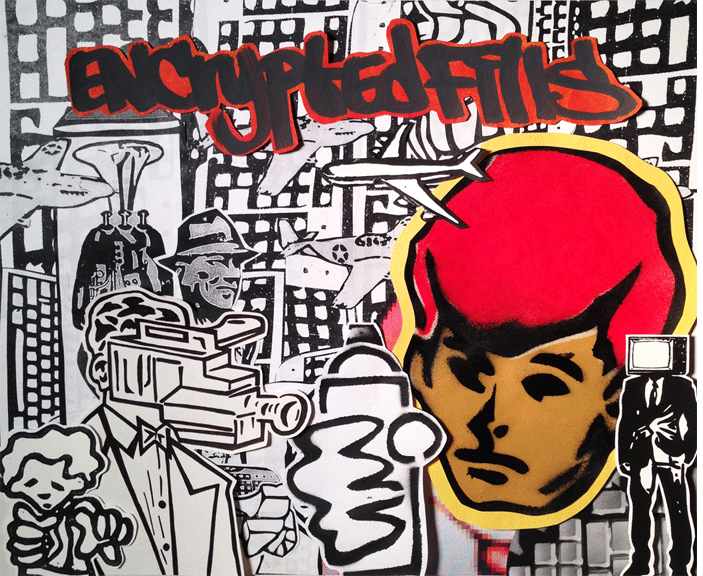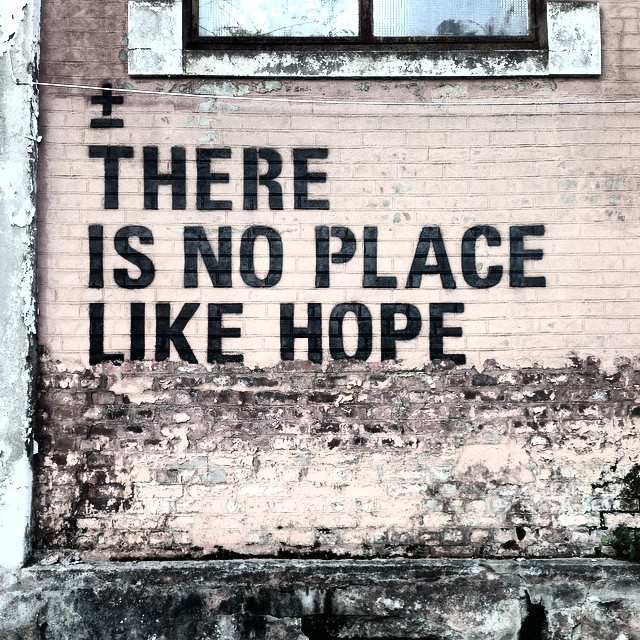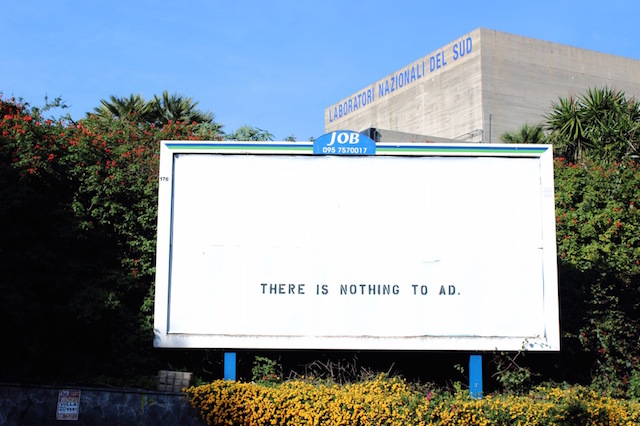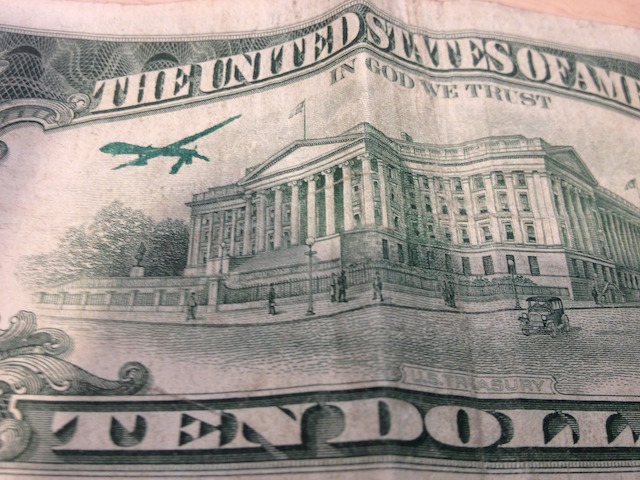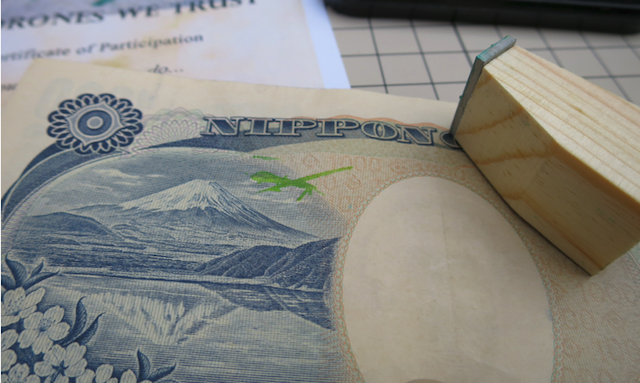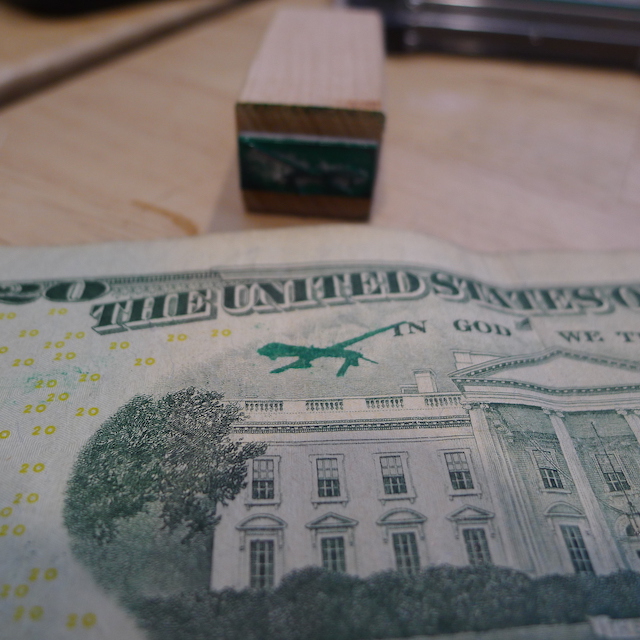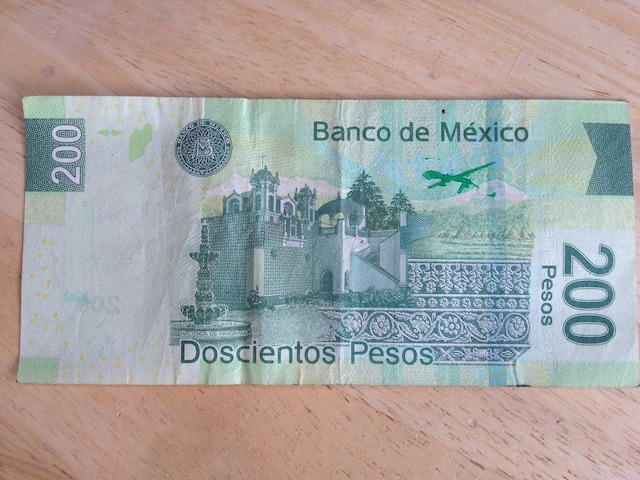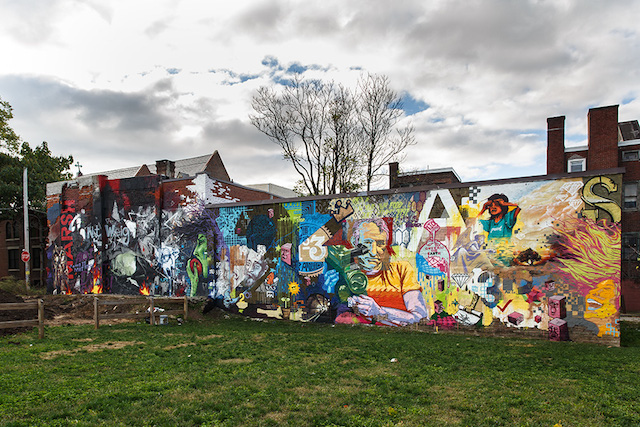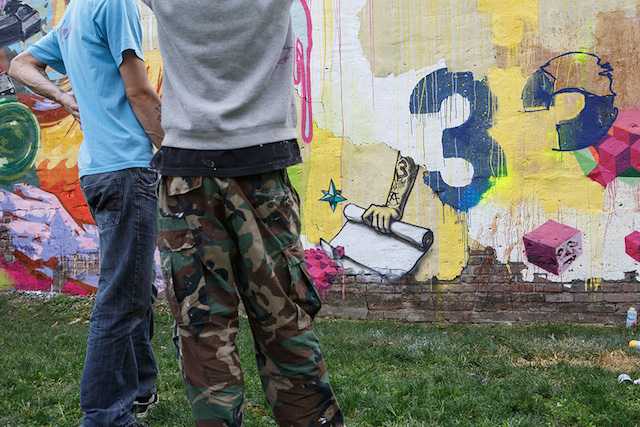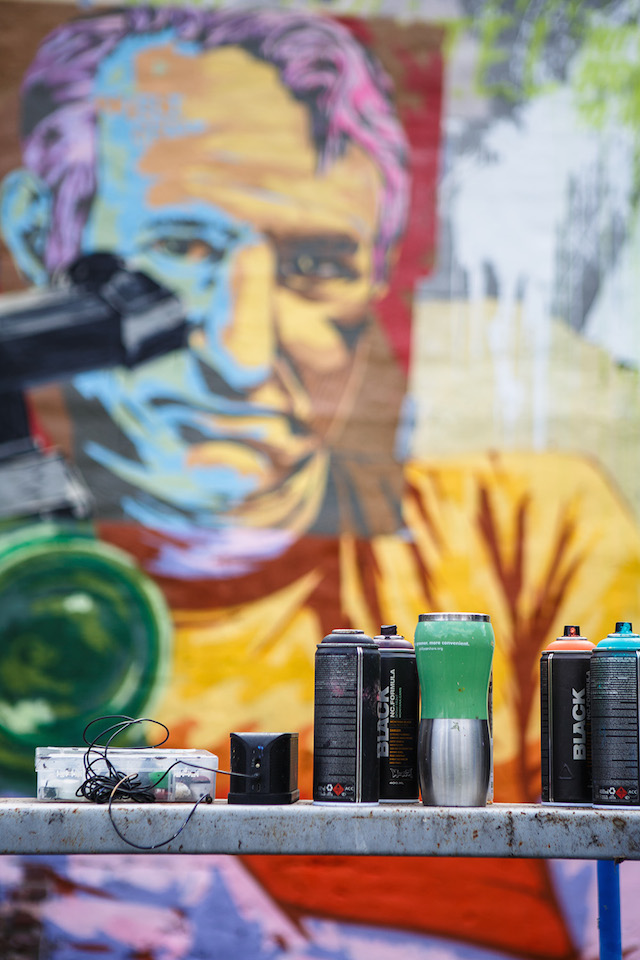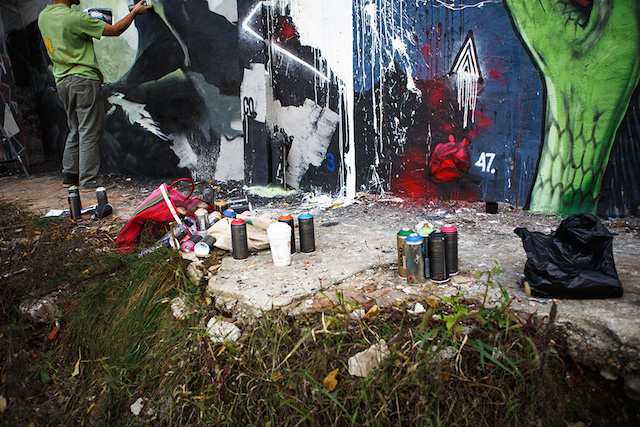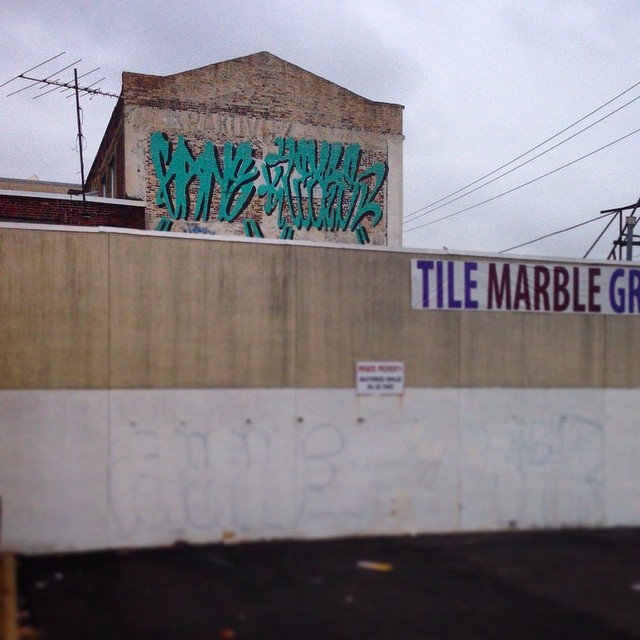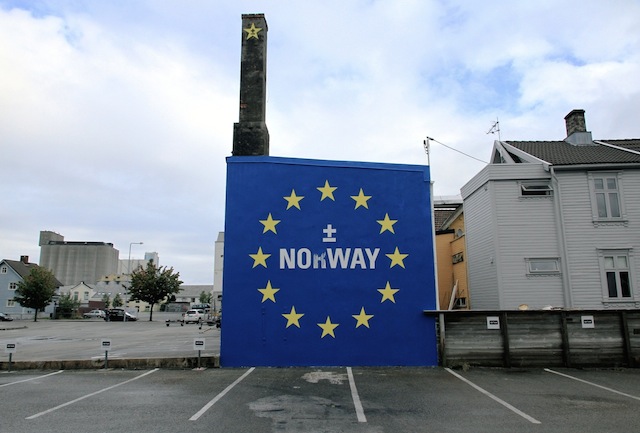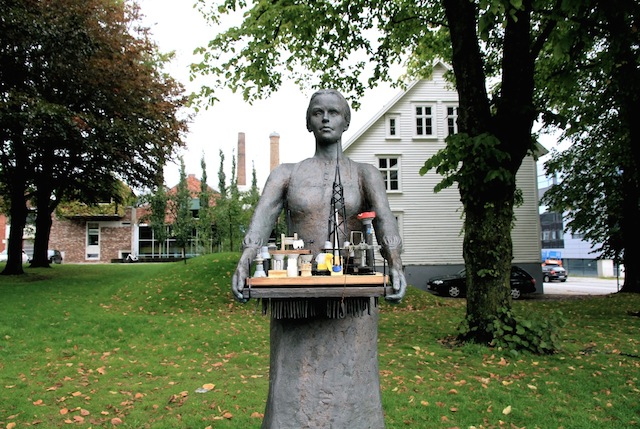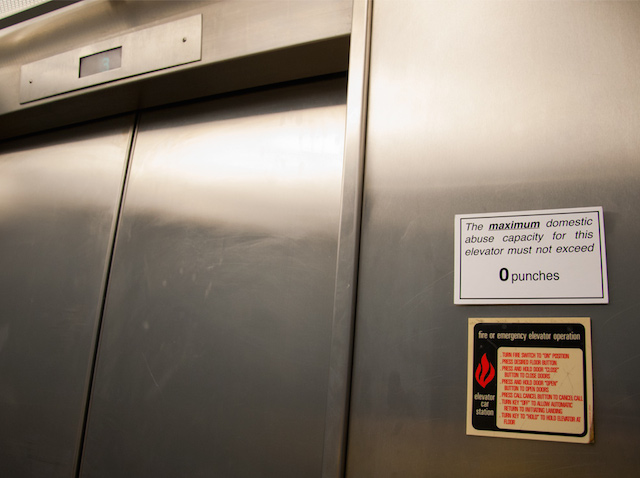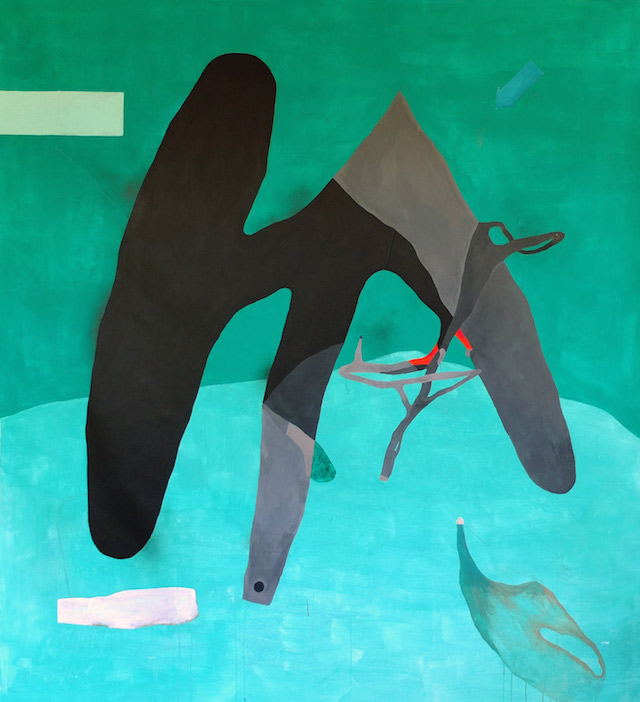
Angelo Milano, founder of Studiocromie and FAME Festival, is one of the most brilliant crazy people I know. When it comes to art and culture and politics, we don’t always agree, but I have a deep respect for him. Angelo is one of a handful of people to whom I can confidently say, “Whether or not I see what you see in this artist or this artwork, if you say it’s special, it’s special.”
Today, Angelo emailed me about an artist whom he thinks is special: 108. Frankly, we haven’t really covered 108 at all on Vandalog (just one passing mention), but I’ve admired his murals for years. Later this month, Angelo will be holding a 108 solo show in Grottaglie, Italy.
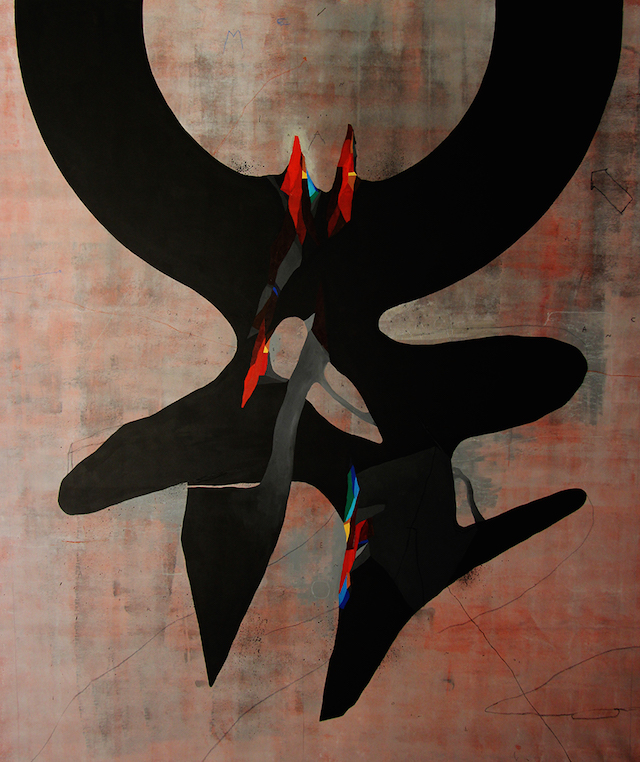
108 is an Italian street artist who, like Angelo, developed in a small Italian town, away from the hustle and bustle and hype. Arguably as a result of that, his work doesn’t cater to the whims of the street art bandwagon, nor even really the Graffuturism bandwagon, which is the closest comparison that could be made. Instead, according to Angelo, 108’s work was a precursor to the current wave of abstract muralism in Italy. 108’s murals are fantastic abstract combinations of boldness and subtlety. His canvases, which admittedly I’m not quite sold on, are reminiscent of Miró. How many artists in the street art or graffiti worlds can say that?
108’s show, Solstizio D’Inverno, opens next week at Studiocromie Grottaglie, Italy. To echo Angelo’s message, “to the interested ones, don’t miss it.”
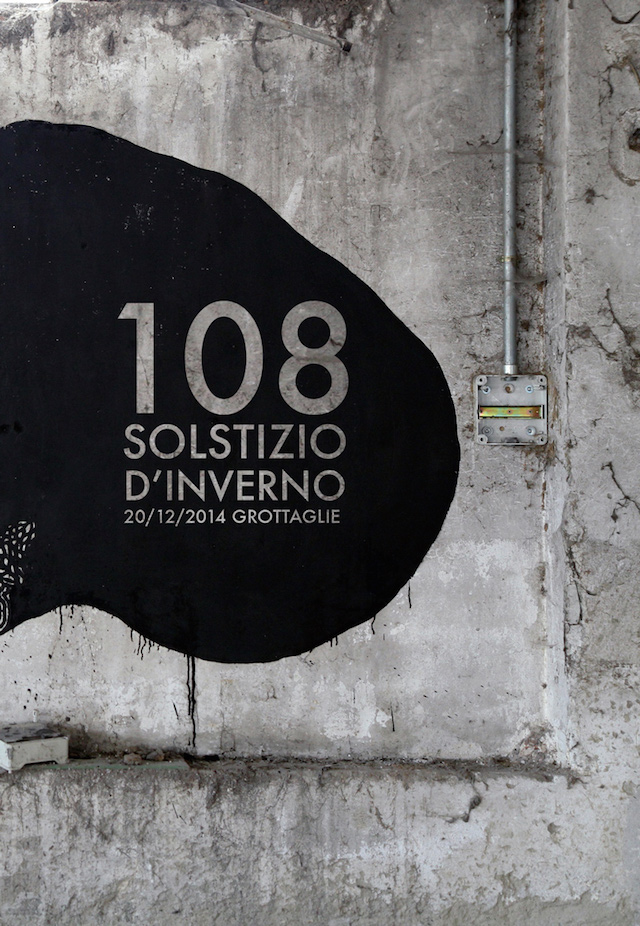
Photos courtesy of Studiocromie

